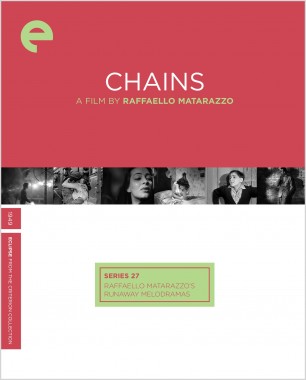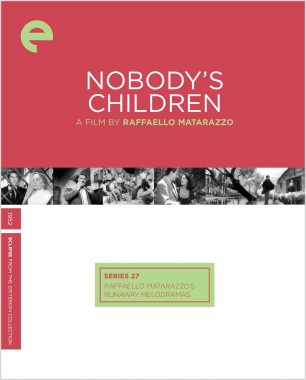Eclipse Series 27: Raffaello Matarazzo’s Runaway Melodramas

In the late 1940s and early 1950s, film critics, international festivalgoers, and other studious viewers were swept up by the tide of Italian neorealism. Meanwhile, mainstream Italian audiences were indulging in a different kind of cinema experience: the sensational, extravagant melodramas of director Raffaello Matarazzo. Though turning to neorealism for character types and settings, these haywire hits about splintered love affairs and broken homes, all starring mustachioed matinee idol Amedeo Nazzari and icon of feminine purity Yvonne Sanson, luxuriate in delirious plot twists and overheated religious symbolism. Four of them are collected here, chronicles of men and women on long and serpentine roads to redemption, each less restrained and more wildly fun than the last.
Films In This Set
-

Chains
1949
After years of making mostly comedies and literary adaptations, Raffaello Matarazzo turned to melodrama with this intense tale of a tight-knit working-class family shattered by temptation. There’s a touch of noir in Chains, in which the saintly yet earthy Yvonne Sanson, as the devoted wife of a mechanic (Amedeo Nazzari), finds herself unwillingly drawn back to an ex-love who has turned to crime.
-

Tormento
1950
Anna (Yvonne Sanson) flees her home, where she has been victimized for years by her spineless father’s mean-spirited second wife, to be with her lover (Amedeo Nazzari), an honest businessman yet to make his fortune. When he is accused of a murder he didn’t commit, the couple’s domestic tranquillity is upended, and a desperate Anna must rely on her cruel stepmother to help support their child.
-

Nobody’s Children
1952
Nobody’s Children is the first half of an overflowing diptych of melodramas chronicling the labyrinthine misfortunes of a couple torn cruelly apart by fate (and meddling villains). When Guido (Amedeo Nazzari), a young count, falls for Luisa (Yvonne Sanson), the poor daughter of one of the miners who works at his family’s quarry, his mother and her nefarious henchman scheme epically to separate the two forever.
-

The White Angel
1955
In The White Angel,, Raffaello Matarazzo’s sequel to his blockbuster Nobody’s Children, the perpetually put-upon Guido and Luisa (Amedeo Nazzari and Yvonne Sanson) return for a new round of trials and tribulations. This time, the reversals of fortune are even more insanely ornate, a plot twist involving doppelgängers beats Vertigo to the punch by three years, and the whole thing climaxes with a jaw-dropping women-in-prison set piece.
Films In This Set
-

Chains
1949
After years of making mostly comedies and literary adaptations, Raffaello Matarazzo turned to melodrama with this intense tale of a tight-knit working-class family shattered by temptation. There’s a touch of noir in Chains, in which the saintly yet earthy Yvonne Sanson, as the devoted wife of a mechanic (Amedeo Nazzari), finds herself unwillingly drawn back to an ex-love who has turned to crime.
-

Tormento
1950
Anna (Yvonne Sanson) flees her home, where she has been victimized for years by her spineless father’s mean-spirited second wife, to be with her lover (Amedeo Nazzari), an honest businessman yet to make his fortune. When he is accused of a murder he didn’t commit, the couple’s domestic tranquillity is upended, and a desperate Anna must rely on her cruel stepmother to help support their child.
-

Nobody’s Children
1952
Nobody’s Children is the first half of an overflowing diptych of melodramas chronicling the labyrinthine misfortunes of a couple torn cruelly apart by fate (and meddling villains). When Guido (Amedeo Nazzari), a young count, falls for Luisa (Yvonne Sanson), the poor daughter of one of the miners who works at his family’s quarry, his mother and her nefarious henchman scheme epically to separate the two forever.
-

The White Angel
1955
In The White Angel,, Raffaello Matarazzo’s sequel to his blockbuster Nobody’s Children, the perpetually put-upon Guido and Luisa (Amedeo Nazzari and Yvonne Sanson) return for a new round of trials and tribulations. This time, the reversals of fortune are even more insanely ornate, a plot twist involving doppelgängers beats Vertigo to the punch by three years, and the whole thing climaxes with a jaw-dropping women-in-prison set piece.


Chains

Tormento

Nobody’s Children

The White Angel